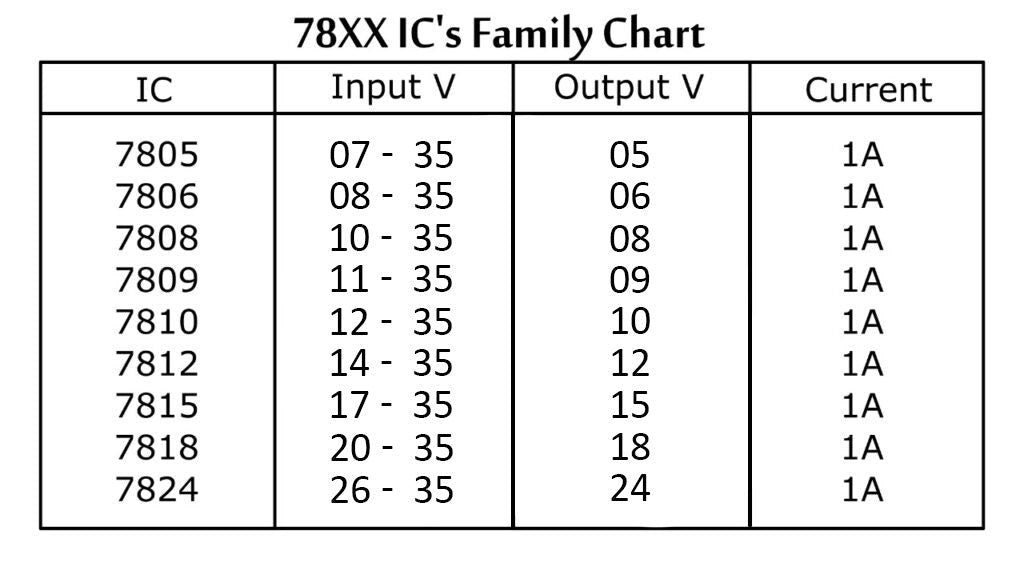Description
Non-Branded IC LM78xx Fixed Voltage Regulator DIP
A Linear Voltage Regulator IC in a TO-220 package refers to a type of integrated circuit designed to regulate voltage levels. It ensures that electronic devices receive a constant voltage, despite variations in input voltage or load conditions. The TO-220 designation refers to the physical packaging of the IC, which is a popular form factor for moderate to high-power applications due to its ability to dissipate heat effectively.
- 78xx Series: The 78xx series regulators provide positive fixed output voltages, such as +5V (7805), +12V (7812), and +15V (7815). The "xx" denotes the output voltage.
- 79xx Series: The 79xx series is the complement to the 78xx, offering negative fixed output voltages like -5V (7905), -12V (7912), and -15V (7915).
Key Characteristics of Linear Voltage Regulator ICs in TO-220 Packages:
- Voltage Regulation: These ICs provide a stable output voltage from a higher, fluctuating input voltage. They can come in both fixed and adjustable output versions.
- Package: The TO-220 package is characterized by its three leads (input, ground, output) and a metal tab that can be used to attach a heatsink for improved heat dissipation. This package is designed to handle higher currents and power dissipation compared to smaller packages.
- Current and Power Handling: Depending on the specific model, these regulators can typically handle output currents ranging from around 1A to 5A or more. The actual power handling capability is also dependent on the ability to dissipate heat effectively, often requiring a heatsink.
- Applications: They are widely used in power supplies, consumer electronics, automotive systems, and any application requiring a stable voltage supply.
- Examples: Some common examples of linear voltage regulators in TO-220 packages include the LM7805 (a 5V fixed output regulator), the LM317 (an adjustable output regulator capable of delivering 1.2V to 37V), and the LM7812 (a 12V fixed output regulator).
Advantages and Limitations:
Advantages:
- Simple to Use: These regulators are easy to implement in a circuit, requiring minimal external components.
- Low Noise: Linear regulators inherently produce less output noise compared to switching regulators, making them suitable for noise-sensitive applications.
- Good Regulation: They provide good load and line regulation, maintaining a constant output voltage.
Limitations:
- Efficiency: The efficiency of linear regulators is lower compared to switching regulators, especially when the difference between the input and output voltage is large. This is because the excess voltage is dissipated as heat.
- Heat Generation: At higher currents or voltage differences, significant heat can be generated, necessitating the use of heatsinks and possibly making the design less compact.
When designing with a TO-220 linear voltage regulator, it's crucial to consider the thermal management aspects, ensuring the IC can dissipate heat effectively to operate reliably. This might involve choosing an appropriate heatsink and considering airflow in the design.



